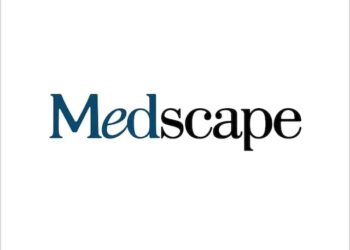Physicians would get a 3% Medicare fee-for-service pay increase — with primary care doctors getting a little more and other doctors getting a little less — and hospitals would also receive a pay bump if Congress adopted two draft recommendations approved Thursday by the Medicare Payment Assessment Commission (MedPAC).
“I think this reflects really excellent work,” Commissioner Scott Sarran, MD, MBA, of Triple Aim Geriatrics in Cook County, Illinois, said of the physician payment recommendation. “We are threading a variety of needles,” and although concerns remain about ensuring more holistic care and moving more toward outcomes-based payments, “those are ongoing issues we will continue to grapple with. In the meantime, we are where we are, and I think this is an excellent set of recommendations.”
The physician pay recommendation, which the commissioners approved unanimously, would replace the current fee-for-service update scheduled for 2026 with an increase equal to the increase in the Medicare Economic Index (MEI) — a measure of medical inflation — minus 1%. Since the MEI is expected to increase by 2.3% in 2026, that would give physicians a 1.3% pay bump.
The recommendation also includes an extra pay increase for “safety net” providers who treat low-income Medicare beneficiaries; that would add an average of 1.7% to physician pay, for a total increase of 3%. However, because the commissioners also want to incentivize primary care providers, the “safety net” pay increase would vary depending on specialty, with primary care clinicians receiving a bigger bump than other specialties.
Overall, if Congress were to pass both parts of the recommendation, primary care clinicians would see an average 5.7% pay increase compared with 2.5% for all other clinicians. This recommendation is expected to increase Medicare spending by $2 billion to $5 billion for 1 year and by $10 billion to $25 billion over 5 years, according to MedPAC staff.
Some of the factors considered in formulating the recommendations included beneficiary access to care, quality of care, and physicians’ revenues and costs. The staff found that beneficiaries had access to care that was “comparable to, or in most cases better than, privately insured people ages 50-64,” said MedPAC principal policy analyst Rachel Burton, MPP. Quality of care was harder to measure, with wide geographic variation in measurements, although patient experience scores remained stable, she said.
As for clinician revenues and costs, the numbers there were mixed, Burton said. In 2023 — the latest year for which numbers were available — spending per Medicare beneficiary increased 4.2%, while the ratio of private-insurance payment rates to Medicare fee-for-service rates grew slightly in 2023, to 140% of Medicare. As for clinicians’ costs, the increase in the MEI hit a peak of 4.4% in 2022 but is projected to slow to 2.3% in 2026, she said.
Commission member Gina Upchurch, RPh, MPH, of Senior PharmAssist in Durham, North Carolina, said that although she supported the recommendation, “I do wish we would track the number of geriatricians and make that super clear to people. We’re supposed to be helping Medicare beneficiaries, the vast majority of them being older adults. We have a shrinking group of geriatricians, not just geriatricians, but advanced practice folks who are specialized and trained in geriatrics … I hope we will keep an eye on the number of geriatricians.”
Commissioners also approved a second recommendation to update the 2025 acute care hospitals base payment rates by the amount specified under current law — plus 1%, and add $4 billion to payments for hospitals that serve low-income and uninsured patients. However, this recommendation was a little more controversial than the physician pay recommendation.
“Our methodology here, historically and currently, is flawed,” said Brian Miller, MD, MPH, MBA, of Johns Hopkins University in Baltimore, who was one of two commissioners to vote against the recommendation. In addition to possible flawed calculations related to hospital outpatient departments, “we should not be analyzing [outpatient payments] and [inpatient payments] together; they must be examined separately.” Miller added that the inpatient payment update may be too low, while the outpatient payment update “is too high. We’re also failing to integrate the commission’s prior site-neutral [payment] recommendations,” which suggest that Medicare should be paying the same amount for a given service regardless of where it is performed.
Commissioner Kenny Kan, CPA, of Horizon Blue Cross Blue Shield, in Newark, New Jersey, agreed, saying that services provided under Medicare’s Inpatient Prospective Payment System should be analyzed separately from payments for outpatient services, “as those services are provided at different sites of care and vary in resource intensity, I believe it is important to compare payments to hospital outpatient departments to the appropriate market for outpatient services, which would include [ambulatory surgery centers] and physician services.” He also endorsed the idea of site-neutral payments.
But commissioner Lawrence Casalino, MD, PhD, of Weill Cornell Medical College in New York City, supported the recommendation, although he did agree that site-neutral payments need more attention. “The lack of site-neutral payments, has led to the reorganization of the whole healthcare system,” he said, with hospitals buying up physician practices so they can benefit from the higher payments hospitals get for outpatient care. “It may be a good thing or it may be a bad thing for physicians to be employed by hospitals — there are certainly advantages and disadvantages to that. But if it happens, it should happen on its merits, not because there’s extra pay for the same service.”
Both the physician pay recommendation and the hospital pay recommendation will be included in the commission’s March 2025 report to Congress.
Source link : https://www.medpagetoday.com/publichealthpolicy/medicare/113846
Author :
Publish date : 2025-01-17 22:15:46
Copyright for syndicated content belongs to the linked Source.


![author['full_name']](https://newshealth.biz/wp-content/uploads/2025/01/MedPAC-Members-Vote-to-Recommend-Pay-Hikes-for-Physicians-and.jpg)












